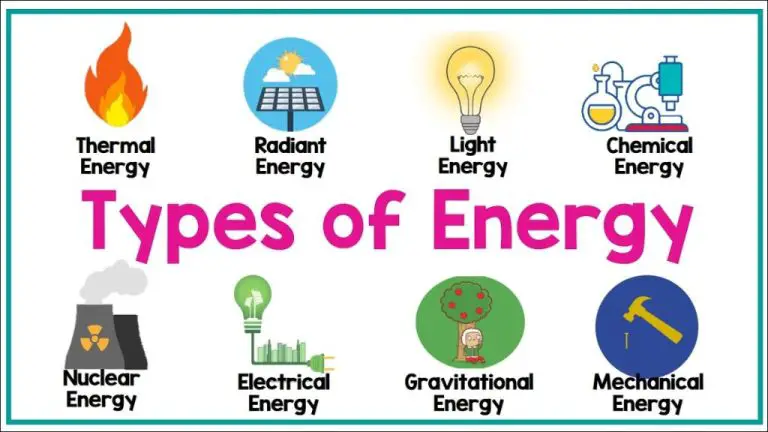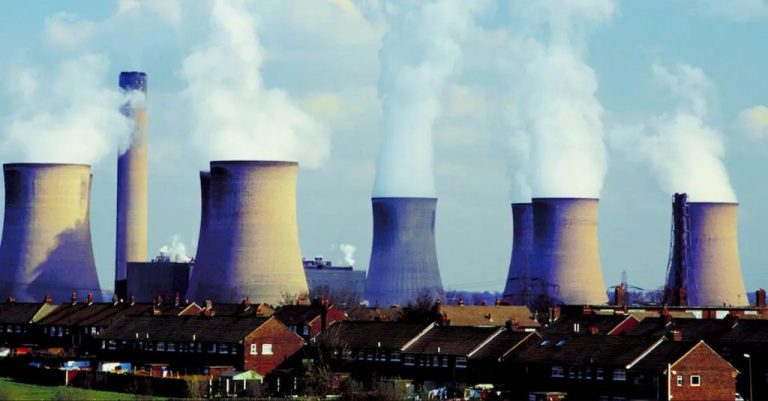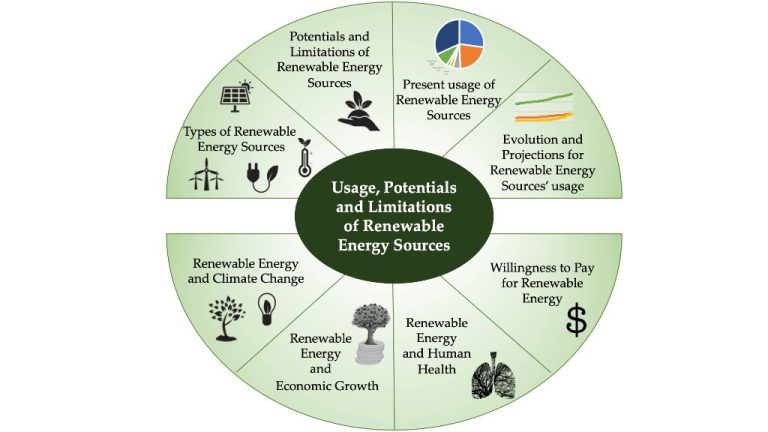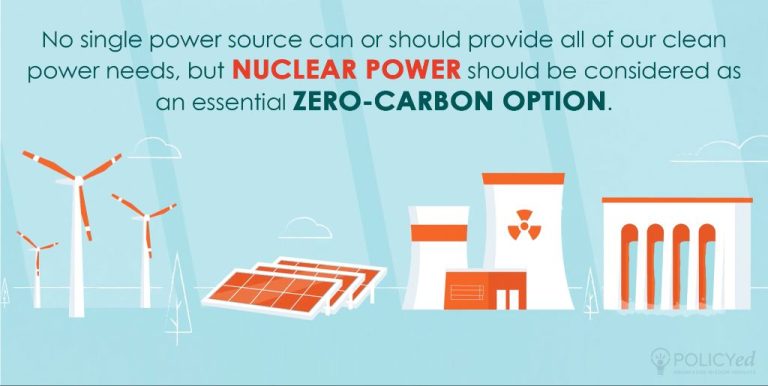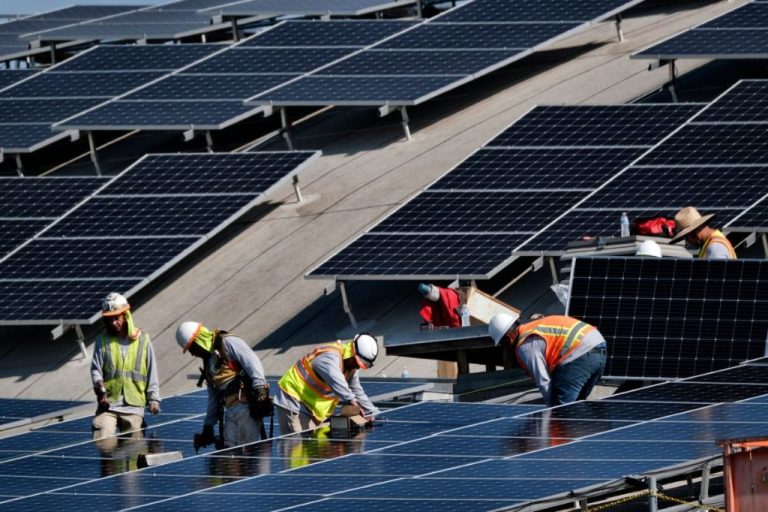What Are The 4 Main Types Of Non Renewable Energy?
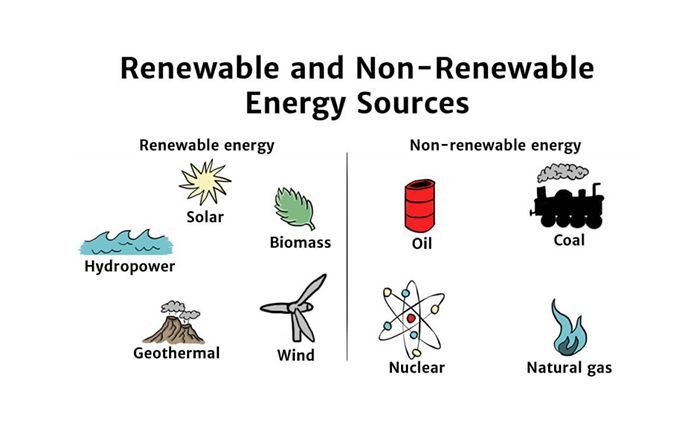
Nonrenewable energy comes from sources that will eventually dwindle or run out completely. The four main types of nonrenewable energy are coal, petroleum, natural gas, and nuclear energy.[1] These energy sources are considered nonrenewable because their fuel sources exist in finite quantities and, once used, cannot be replaced in a short period of time.[2]
Coal, petroleum, and natural gas are fossil fuels that originally formed when prehistoric plants and animals died and were gradually buried by layers of rock over millions of years. The pressure and heat from being buried turned them into fuels like oil, natural gas, and coal that we extract and burn today.[3]
Nuclear energy comes from the splitting of uranium atoms in a process called nuclear fission. Uranium is a nonrenewable metal mined from the earth in a number of places around the world.
While fossil fuels and nuclear energy have provided a major source of energy around the world, they face challenges such as resource scarcity, environmental impacts, and high costs. Many countries are moving toward increased use of renewable energy sources such as solar, wind, hydropower, geothermal, and biomass.
- https://greentumble.com/what-are-the-4-main-types-of-non-renewable-energy
- https://www.eia.gov/kids/for-teachers/lesson-plans/pdfs/20questions.pdf
- https://www.nwf.org/~/media/PDFs/Eco-schools/Entergy%20Curriculum/Entergy-PhaseI/Grades%205-8/LESSON%203_Grades5-8_An%20Energy%20Mix.ashx
Coal
Coal is a fossil fuel and is the largest source of energy for generating electricity worldwide. Coal plays an important role in meeting global energy demand and currently accounts for about 27% of the world’s primary energy consumption and generates around 40% of global electricity (1).
Most coal is used for electricity generation. Coal is burned in coal power plants to heat water, producing steam that drives turbines which generate electricity (1).
Burning coal for electricity has major environmental impacts. Coal mining and coal plant operations produce air pollution including soot, smog, acid rain, global warming emissions, and toxic air pollutants. According to the Union of Concerned Scientists, coal-fired power plants are the largest source of sulfur dioxide emissions in the U.S., which contributes to smog and acid rain. Coal plants also emit nitrogen oxides, particulate matter, and heavy metals like mercury, lead, chromium, and arsenic (2).
The mining and combustion of coal releases a number of harmful pollutants. According to the Environmental Protection Agency, the burning of coal is a major source of nitrogen oxide emissions, sulfur dioxide, and mercury emissions. The mining and cleaning process of coal produces solid waste material and contaminated water runoff (3). Coal mining and combustion leads to deforestation, erosion, land subsidence, and degradation of water quality. Abandoned or improperly closed mines also contribute dangerous gases, dust, pollution and acid mine drainage into the environment (1).
The world has enough economically recoverable coal to last around 150 years at current production levels based on reserves and resources identified at the end of 2019 (1). The top hard coal producers are China, India, Australia, Indonesia, Russia and the United States (1).
Sources:
(1) https://www.eia.gov/energyexplained/coal/coal-and-the-environment.php
(2) https://www.ucsusa.org/resources/coal-power-impacts
(3) https://www.gem.wiki/Environmental_impacts_of_coal
Petroleum
Petroleum, which includes crude oil and natural gas, is one of the main sources of nonrenewable energy in the world. It has a variety of important uses and is extracted through various methods.
According to the National Geographic [1], petroleum is used to manufacture many common materials and is crucial for transportation. It can be refined into gasoline, jet fuel, diesel, heating oil, asphalt, and petrochemical feedstocks. Petrochemical feedstocks are used to make plastics, medicines, fertilizers, pesticides, food additives, synthetic fabrics like polyester, computers and electronics, packaging, and many other everyday items.
Petroleum reserves are fossil fuel deposits that can be extracted using current technology and at an economically viable cost. Many of the world’s largest petroleum reserves are located in the Middle East, including Saudi Arabia, Iraq, Iran, and Kuwait [2]. However, the United States, Russia, and Canada also have substantial reserves.
There are two main methods of extracting petroleum: primary and secondary recovery. Primary recovery uses traditional vertical well drilling and pumping techniques. Secondary recovery injects water, steam, or gas into existing wells to maintain reservoir pressure and push more oil to the surface [3].
Natural Gas
Natural gas is a fossil fuel that accounts for about 25% of energy consumption in the United States (EIA). It is composed primarily of methane and is an important fuel source for electricity generation, home heating, and industrial processes. Over the last decade, advances in hydraulic fracturing or “fracking” technology have unlocked vast new natural gas reserves in shale rock formations across North America.
While natural gas burns cleaner than coal and oil, producing around half the carbon dioxide emissions by comparison, its extraction and distribution does come with environmental concerns. Fracking relies on large volumes of pressurized water mixed with chemicals and sand to fracture shale rock and release trapped natural gas. This process has raised issues like groundwater contamination, disposal of fracking wastewater, methane leaks, and small earthquakes in fracking areas.
One study by the UCS found evidence of water contamination from fracking activities near drilling sites (UCS). Other concerns include habitat disruption, air pollution from venting/flaring methane, and increased truck traffic around fracking sites and pipelines (LSE). While the scale varies across regions, these illustrate the complex environmental trade-offs involved with natural gas production.
Nuclear Energy
Nuclear energy originates from the splitting of uranium atoms in a process called nuclear fission. At a nuclear power plant, the heat from fission is used to generate steam that spins turbines to produce electricity. Currently, nuclear energy provides about 10% of the world’s electricity.
Nuclear power plants have multiple robust safety systems in place to prevent accidents and radioactive releases. The industry’s safety record over six decades is strong, though high-profile disasters like Chernobyl and Fukushima have undermined public confidence in some countries. Modern reactors have added safety improvements and are designed to shut down automatically in the event of emergencies.
One of the challenges of nuclear power is radioactive waste management. Used nuclear fuel remains radioactive for thousands of years and requires isolation from the environment. Most waste today is stored on-site at power plants, but many countries are developing geological repositories deep underground for safe long-term disposal. Recycling and breeding fuel from waste is also being explored to make better use of available resources.
According to the World Nuclear Association, uranium reserves are fairly abundant and identified resources could last over 130 years at current usage rates before more expensive extraction or fuel recycling is required.
Renewables vs Nonrenewables
Renewable energy sources like solar, wind, hydroelectric, geothermal and biomass are considered sustainable and environmentally friendly. They produce much lower carbon emissions compared to fossil fuels like coal, oil and natural gas, which are nonrenewable sources (Source). Renewables do not deplete finite reserves and their supplies are replenished naturally over time. In contrast, nonrenewables exist in fixed amounts and will eventually be depleted.
In terms of costs, renewables were previously more expensive than conventional fuels, but prices have dropped dramatically in recent years as technology improves. Many renewables like solar and wind are now cost-competitive with fossil fuels. However, factors like location and weather can impact the economics of renewables (Source).
Public opinion tends to favor renewables over nonrenewables. Polls indicate strong support for expanding renewables to address climate change and reduce dependence on fossil fuels. However, there is also opposition in some areas over land usage and aesthetics for large-scale renewable projects like wind and solar farms.
Environmental Impacts
The use of nonrenewable energy sources such as coal, oil, and natural gas has significant negative impacts on the environment.
Burning fossil fuels produces air pollutants like sulfur dioxide, nitrogen oxides, particulates, and heavy metals like mercury 1. These emissions contribute to acid rain, smog, respiratory illnesses, and climate change. Fossil fuel extraction and transportation can also pollute the environment. Oil spills contaminate oceans and leakages from natural gas pipelines release methane. Mining coal strips the land of forests and vegetation and can pollute nearby waters.
According to the National Geographic, burning fossil fuels is the primary source of CO2 emissions driving global climate change 2. Climate change leads to melting glaciers, rising sea levels, warmer oceans, drought, wildfires, and extreme weather events.
Nuclear power generation produces radioactive waste that must be safely contained for thousands of years to prevent contamination. Uranium mining also generates radioactive tailings. Improper nuclear waste storage poses contamination risks. Nuclear accidents, though rare, can release radiation into the environment.
Reserves and Scarcity
According to the most recent estimates, the world currently has about 52.8 years worth of natural gas reserves remaining
. Reserves for oil and coal are lower, at approximately 51 years for oil and 114 years for coal. At current consumption rates, global fossil fuel reserves are projected to be depleted within the next 50-100 years.However, experts caution that these reserve lifetime estimates are based on known reserves and do not account for undiscovered deposits or changes in demand. The lifetimes of fossil fuel reserves can be extended through new discoveries and extraction technologies. Nonetheless, fossil fuels are finite resources that will eventually be depleted if consumption continues at current rates.
The scarcity of remaining fossil fuel reserves underscores the need for energy conservation and transitioning to renewable energy sources that are continually replenished, such as solar and wind power. While fossil fuels have powered the modern industrial economy, renewables are poised to become the dominant energy sources of the future.
The Future of Nonrenewables
Fossil fuels like coal, oil, and natural gas are expected to continue dominating the energy supply in the coming decades, according to the International Energy Agency’s World Energy Investment 2023 report. However, renewable energy is projected to grow faster than fossil fuels. The share of renewables in the global power mix is forecasted to reach up to 85% by 2050, according to the International Renewable Energy Agency’s Global Energy Transformation roadmap.
Many countries have set goals to reduce fossil fuel use and transition to cleaner forms of energy. Investments in renewable power generation are expected to outweigh fossil fuel investments going forward. Alternatives like solar, wind, hydropower and geothermal are becoming more cost-competitive. However, factors like energy storage, grid flexibility and policy support will impact the pace of transition.
While renewables are rising, fossil fuels will likely still account for over 75% of global energy in the near future, as per IRENA projections. But their share is expected to decline steadily. More reductions in fossil fuel subsidies, carbon pricing mechanisms, and energy efficiency policies could accelerate the shift to renewable energy.
Conclusion
In conclusion, there are four main types of nonrenewable energy sources that currently provide most of the world’s power – coal, petroleum, natural gas, and nuclear energy. These sources are considered nonrenewable because they draw on finite resources that will eventually dwindle or become too environmentally damaging to retrieve. Key points about nonrenewable energy include:
- Coal, petroleum, and natural gas are fossil fuels formed over millions of years from decayed plants and animals. They produce carbon dioxide emissions when burned.
- Nuclear energy harnesses the power of radioactive elements like uranium to generate electricity without direct carbon emissions. However, it carries risks like radioactive waste and meltdowns.
- Nonrenewables currently make up over 80% of global energy use. But reserves are limited and will eventually decline, especially for fossil fuels.
- Nonrenewables can have significant environmental impacts such as air and water pollution, habitat destruction, and resource extraction dangers.
- Renewable energy sources like solar, wind, geothermal, and hydropower are cleaner alternatives that could replace nonrenewables, but currently lack the scale and infrastructure.
- The future likely involves efforts to transition to renewables before nonrenewable reserves run out or their environmental consequences become catastrophic.
In summary, nonrenewable energy has powered the modern world, but may prove environmentally and economically unsustainable long-term without a shift to renewable energy sources.

